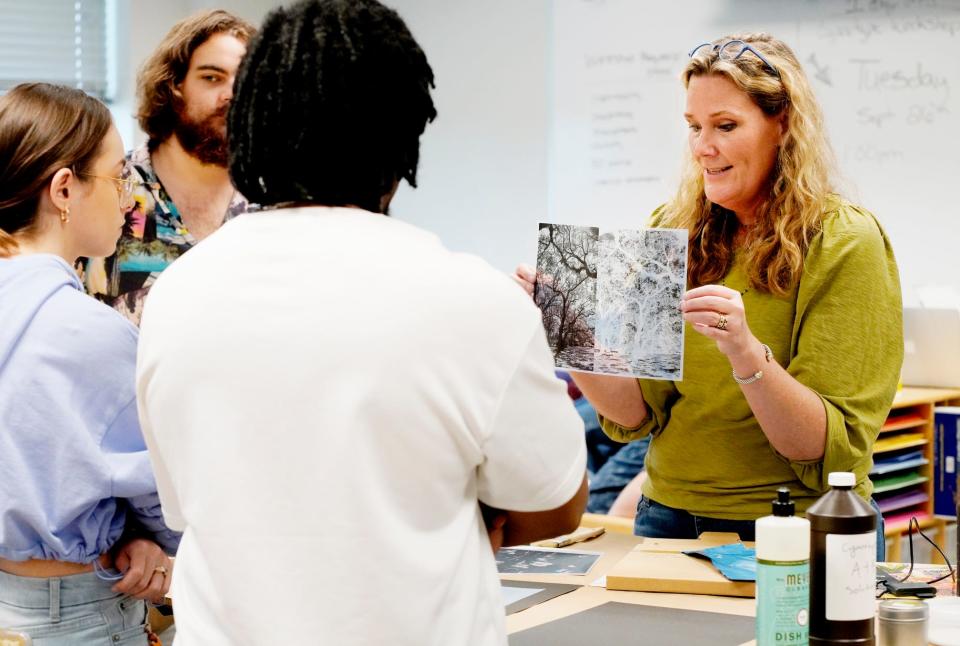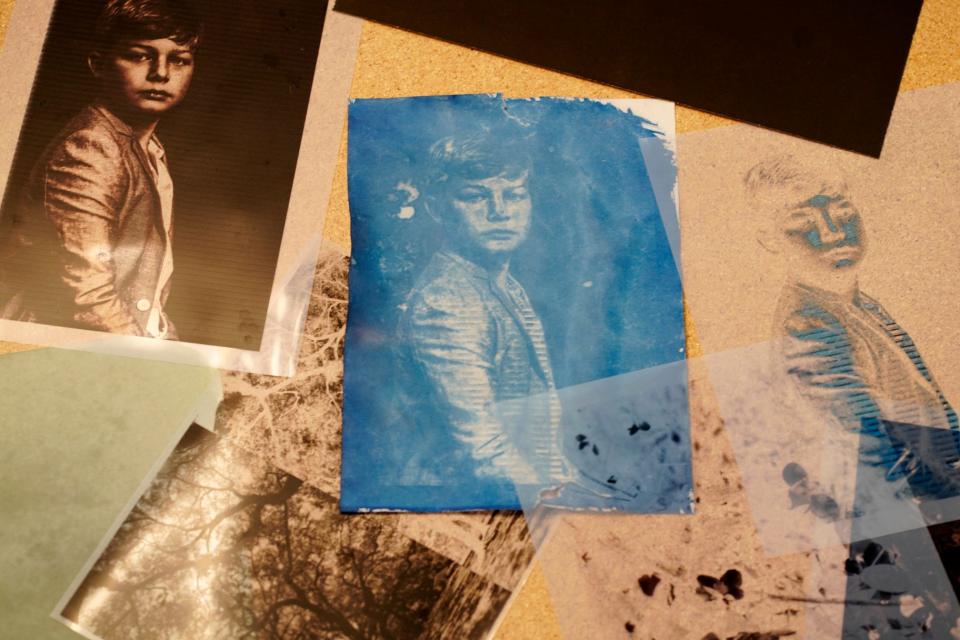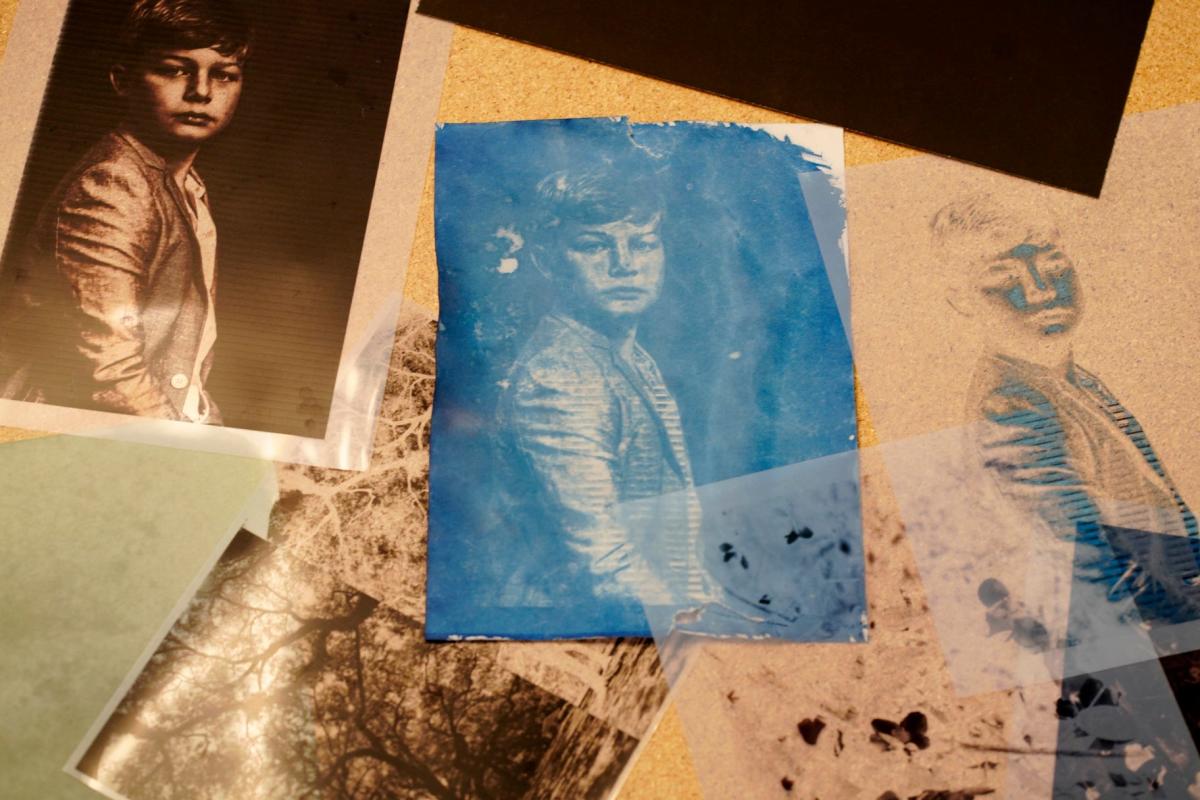[ad_1]
The reason Sir John Herschel invented the cyanotype photography process in 1842 was to create an easier, cheaper and more durable way to process images than the silver-based method, according to the Royal Botanical Gardens website.

The reason Jennifer Robinson, assistant professor and program director for the Communication Media program at BPCC, teaches it to her History of Photography students in 2023 is that it “provides students with a foundational understanding of the photographic process, crucial for mastering modern digital techniques.”
She uses the way British photographer Mike Ware created in 1994, one that does not require a darkroom. She just orders 2 solutions online. After that, “all you need to get started is a dimly lit area,” she said.
“Coat your chosen material, let it dry, arrange your objects or negatives, expose them to sunlight or UV bulbs, and as the final step rinse the prints with water,” Robinson said. Her pro tip is adding hydrogen peroxide to the initial water bath to create the vibrant blue coloring that it is known for, and why it developed the name “blueprint.”
These blueprints are not just for building plans. They create beautiful botanical images and can give a new look to a film negative.
“Most students couldn’t wait to start experimenting with designs, incorporating flowers, leaves, and even layering transparent film strips,” Robinson said. “They liked noticing the reactions that occur, like adding salt crystals creating unique patterns or turmeric transforming blue areas into green.”

For Robinson, the class is not just about the medium, “it’s a journey into humanity’s documentation through the ages.”
She thinks learning these methods encourages creative exploration, problem-solving techniques and attention to detail.
“Teaching historic photographic processes and darkroom techniques in the digital age may seem outdated, but the value remains substantial,” she said.
Robinson also will head the Bossier Parish Community College Foundation’s second annual Golden Lens Photography Contest in the 2023 Prize Fest. Up to 30 photographs will be selected by a jury panel of experts with first place receiving $1,000 cash.
Prize Fest’s competitions in film, music, fashion, food and more during the month of October are filled with excitement. Robinson feels the same about the photography competition.
“Golden Lens follows that same approach, encouraging photographers to create work within a certain area for an exhibition that will generate a dialogue between work’s about perspective and creativity,” she said.
This article originally appeared on Shreveport Times: BPCC photography class teaches historic cyanotype process
[ad_2]
